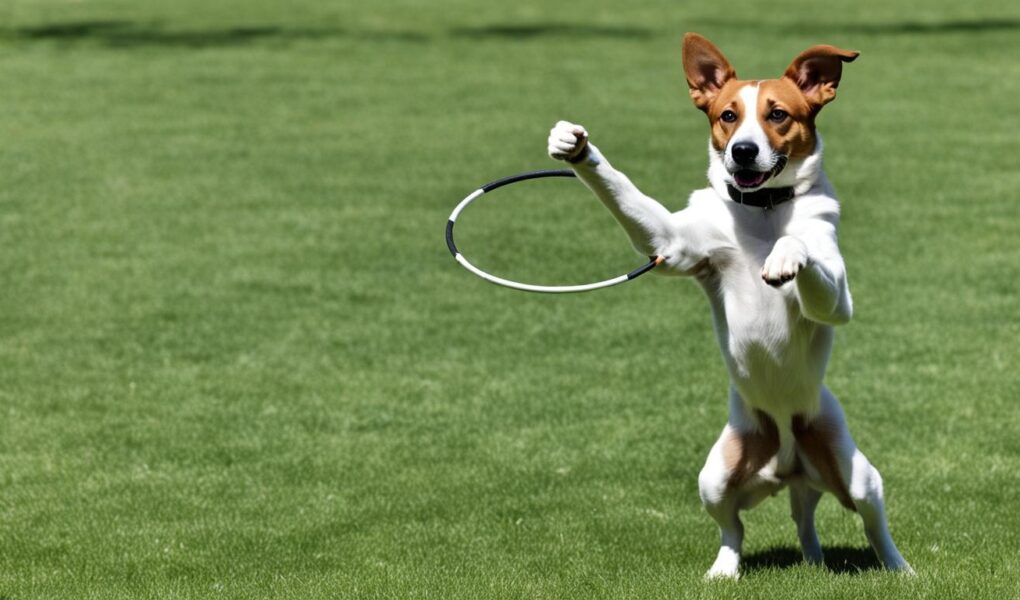Unlocking Canine Intelligence: Tricks to Teach Your Dog
Every dog owner knows the magic that lies within the bond shared with their four-legged friend, but what if you could deepen that connection even further? Teaching your dog new tricks is more than just a fun pastime; it’s an engaging way to stimulate their minds, strengthen your relationship, and enhance their obedience. Whether you have a playful puppy eager to learn or a seasoned canine companion looking to brush up on their skills, the art of trick training opens a world of possibilities. In this article, we’ll explore a variety of effective techniques and creative ideas that can turn trick training into an enjoyable adventure for both you and your furry sidekick. Get ready to discover the joy of teaching your dog not just to obey, but to impress!
Table of Contents
- Effective Techniques for Teaching Basic Commands
- Engaging Activities to Strengthen Bonding and Learning
- Creative Ways to Reinforce Positive Behavior
- Advanced Tricks to Challenge Your Dogs Intelligence
- Q&A
- Key Takeaways
Effective Techniques for Teaching Basic Commands
Teaching your dog basic commands is a rewarding experience that fosters communication and strengthens the bond between you and your furry friend. Start with simple commands like “sit,” “stay,” and “come.” It’s essential to use positive reinforcement techniques to encourage your dog’s learning. Here are some effective methods to ensure your training sessions are successful:
- Use Consistent Commands: Always use the same word or phrase for each command to avoid confusing your dog.
- Short, Fun Sessions: Keep training sessions brief but enjoyable, usually around 5 to 10 minutes, to maintain your dog’s attention.
- Reward Immediately: Praise your dog right after they perform the desired action so they can associate the command with the reward.
- Practice in Various Environments: Gradually increasing distractions will help your dog respond to commands in different situations.
Incorporating visual cues can greatly enhance understanding and retention. Pair verbal commands with hand signals or gestures. This dual-action approach caters to your dog’s different learning styles. Consider this simple table below to visualize the commands and their associated cues:
| Command | Hand Signal |
|---|---|
| Sit | Open palm facing up |
| Stay | Hand held up like a stop sign |
| Come | Waving your hand towards you |
Engaging Activities to Strengthen Bonding and Learning
Engaging your dog in fun and rewarding activities not only enhances their learning experience but also fortifies the bond between you. Using positive reinforcement techniques, you can teach your furry friend a variety of tricks that are both useful and entertaining. Some methods to consider include:
- Interactive Games: Incorporate games like tug-of-war or fetch into your training sessions to keep them excited.
- Obstacle Courses: Set up a mini agility course in your backyard using simple items like cones, hoops, and tunnels to challenge them physically and mentally.
- Trick Training Sessions: Dedicate short, regular sessions focusing on different tricks each time—like rolling over or playing dead—to keep their interest high.
You can also turn the learning process into a shared adventure through outings and socialization. Visiting dog parks or attending training classes allows your dog to interact with others and learn from various environments. Try incorporating these activities into your routine for richer bonding experiences:
| Activity | Benefits |
|---|---|
| Dog Walks | Enhances physical health and mental stimulation. |
| Playdates | Improves social skills and behavior. |
| Training Classes | Fosters learning and discipline. |
Creative Ways to Reinforce Positive Behavior
Transforming your dog’s behavior into a positive experience can be both fun and rewarding. Instead of conventional training methods, why not incorporate some inventive tactics into your routine? Rewarding your furry friend with praising words and tailored treats can create a powerful reinforcement loop. Here are a few creative methods to consider:
- Training Games: Turn learning into playtime with fetch or hide-and-seek.
- DIY Training Toys: Craft interactive toys using household items to engage their minds.
- Positive Socialization: Organize playdates with well-behaved dogs to encourage good manners.
Another effective way to encourage desired behaviors is through visual cues and shaping techniques. Using a clicker or a simple camera app to snap their cute antics triggers their ability to associate actions with rewards. Consider the following suggestions to enhance this approach:
| Technique | Description |
|---|---|
| Clicker Training | Use a clicker to mark good behavior, followed by a treat. |
| Behavior Shaping | Gradually reward steps leading to a desired action. |
| Visual Signals | Incorporate hand signals for clarity in commands. |
Advanced Tricks to Challenge Your Dogs Intelligence
To truly stimulate your dog’s mind, consider introducing them to complex multi-step commands that require them to think ahead. Gradually build the difficulty by combining simpler tricks into a more challenging sequence. For instance, teach your dog to fetch specific items by name. Start with two toys: one ball and one frisbee. Use their respective names, encouraging your dog to bring the correct item upon request. This not only enhances their vocabulary but also promotes problem-solving skills.
Another excellent technique involves incorporating interactive puzzle toys into your training routine. These toys are designed to require dogs to manipulate components to access treats. Pair these toys with verbal commands, teaching your furry friend phrases such as “open” or “find it.” This method not only engages their cognitive abilities but also promotes independent thinking. Remember, the more you challenge your dog’s intelligence, the more fulfilled and happy they will be in their daily lives.
Q&A
Q: What is the best age to start training my dog?
A: While you can begin teaching basic commands as early as eight weeks old, the prime time for training is during the puppy stage, up to six months. However, dogs of all ages can learn new tricks—it’s all about patience and consistency!
Q: What are some simple tricks that I can teach my dog?
A: Start with foundational commands like ”Sit,” “Stay,” and “Come.” Once your dog masters these, you can move on to fun tricks like “Shake hands,” “Roll over,” or ”Play dead.” The key is to keep it simple and enjoyable!
Q: How do I keep my dog motivated while training?
A: Dogs respond well to positive reinforcement, which can include treats, praise, or playtime. Experiment with different rewards to find what excites your dog most. A little enthusiasm goes a long way!
Q: What should I do if my dog doesn’t understand a trick?
A: Stay calm and patient! Re-evaluate your teaching methods—perhaps your commands or gestures need to be clearer. Break the trick down into smaller parts, and celebrate small successes, even if it’s just a step toward the ultimate goal.
Q: Is there a specific environment where I should train my dog?
A: Ideally, choose a quiet, distraction-free place for training sessions, such as your home or a secure yard. As your dog improves, gradually introduce more stimulating environments to enhance their focus.
Q: How long should training sessions be?
A: Keep training sessions short and sweet—around 5 to 10 minutes for puppies and up to 15 minutes for adult dogs. Frequent, brief sessions tend to keep dogs more engaged and prevent them from becoming overwhelmed or bored.
Q: Can I train my dog using only verbal commands?
A: While verbal cues are vital, incorporating hand signals or body language can make your commands clearer. Dogs are visual learners, so pairing a word with a gesture can facilitate better understanding.
Q: How can I correct bad behavior while training?
A: Instead of focusing on punishment, redirect your dog’s attention to a more appropriate behavior and reward them for it. For example, if they’re jumping on guests, teach them to sit instead and reward them when they comply.
Q: What if my dog doesn’t seem to enjoy training?
A: Every dog is different! Assess whether the training method suits their personality. Make sessions more engaging by mixing in games or using high-value treats. If your dog appears stressed, take a break and try again later.
Q: How do I know if my dog has mastered a trick?
A: Your dog has likely mastered a trick if they can consistently perform it on command, even in a distracting environment. Practice regularly, and don’t hesitate to reinforce their skills every now and then to keep everything fresh.
Q: Where can I find more resources for teaching my dog tricks?
A: Plenty of books, online courses, and videos provide step-by-step guidance for dog training. Consider joining a local training class or consulting a professional trainer for personalized help. The journey of learning together can be a rewarding experience!
Key Takeaways
As we conclude our exploration of clever tricks to teach your dog, remember that the journey goes beyond mere commands and flashy performances. Each trick you introduce is an opportunity to deepen the bond between you and your furry friend, fostering trust and understanding along the way. With patience, consistency, and a sprinkle of creativity, you can transform everyday moments into playful learning experiences.
So grab those treats, set aside some time, and embark on this rewarding adventure together. Whether your canine companion is mastering “roll over” or simply enjoying the process of learning, every success—big or small—brings its own joy. Now, go ahead and unleash your imaginations; the world of canine tricks awaits! Happy training!



